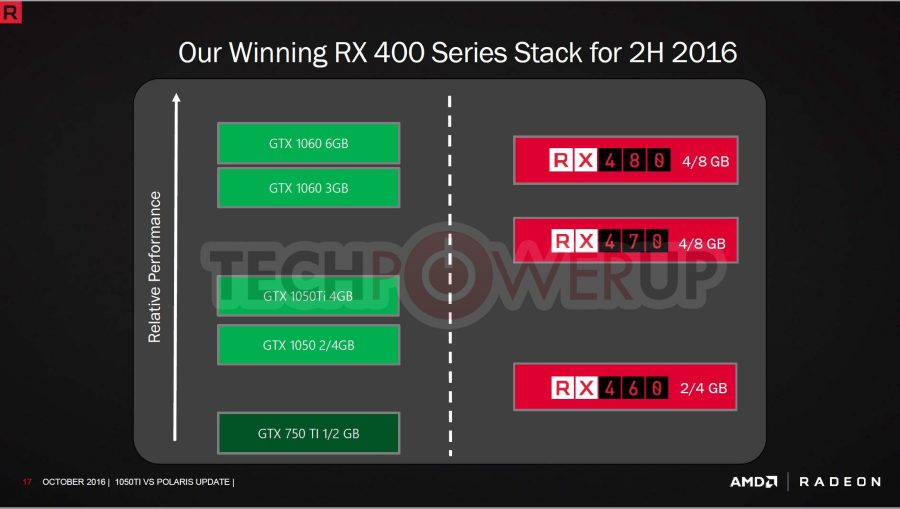They don't list any sources nor data to back up their claim though
Painfully I think they are basing their own article on that 'article' from WCCFTech by Khalid.
The WCCFTech article was 2 days ago while the Tweaktown was 1day 23hrs ago.
And the WCCF article is based upon the embedded platform (mistake to do a direct comparison between the embedded and comparable discrete as can be seen when comparing the Tonga 380X to the Tonga E8950MXM embedded as the clocks would need to be 750MHz for the E8950MXM but are reported by AMD at 1000MHZ with a TDP <95W).
This can be seen that WCCF is extrapolating and assuming the spec is 100% correct as reported by AMD for the embedded platform (which in the past was not entirely correct for previous Tonga embedded part) and correlated to the comparable discrete GPU (again in the past even allowing for the clock rate anomaly downclocking to 750MHz still would not reach <95W in the same way we see with the discrete Polaris 480 downvolted to 0.8V, so there is something specific to the embedded platform solutions).
Following paragraph from WCCF is what makes me think they are jumping the gun like they have with the patent that recently came to light and they are saying is definitely part of Vega.
http://wccftech.com/amd-polaris-revisions-performance-per-watt/AMD has reportedly started rolling out new revisions of its Polaris 10 & Polaris 11 GPUs with a 50%+ improvement in performance per watt. Polaris 10 and Polaris 11 are AMD’s latest GPUs powering the company’s midrange RX 480 & RX 470 as well as mainstream RX 460 graphics cards. The new GPU revisions will reportedly debut first in the embedded market and will deliver the same and/or slightly better performance compared to the previous revisions but at significantly lower power consumption
I think the AMD reported spec for the Polaris embedded platform is more skewed this time due to not only keeping clocks of the discrete but then wrongly using the TFLOPs from that as well and exacerbated by the more dynamic nature of Polaris and way reported by AMD (Tonga and Hawaii were more consistent with their official spec and measurements).
Time will tell, but it does seem plausible that like before AMD is just reporting the wrong clock and compounded it further.
Case in point the embedded mentions specifically 1120MHz clock, but full TFLOPs is only using the 1266MHz clock.
http://www.amd.com/Documents/ultra-high-performance-gpu-product-brief.pdf
Multiple factors that highlight why it is wrong to jump to the conclusions of a general improvement with Polaris and applicable to all platforms.
Personally I think it is a downclocked/volt '480' GPU with specific-unique design for embedded platform that also assists with hitting the <95W TDP spec, I would say similar as before with the Tonga variant that had the wrong marketed clocks but maybe the right TFLOPs; cutting a 380X from 3.97 TFLOPs and 190W TDP to 3TFLOPs and <95W TDP is a big ask (and why I do not think there is a direct correlation between embedded and full discrete GPUs).
Cheers
Last edited:

